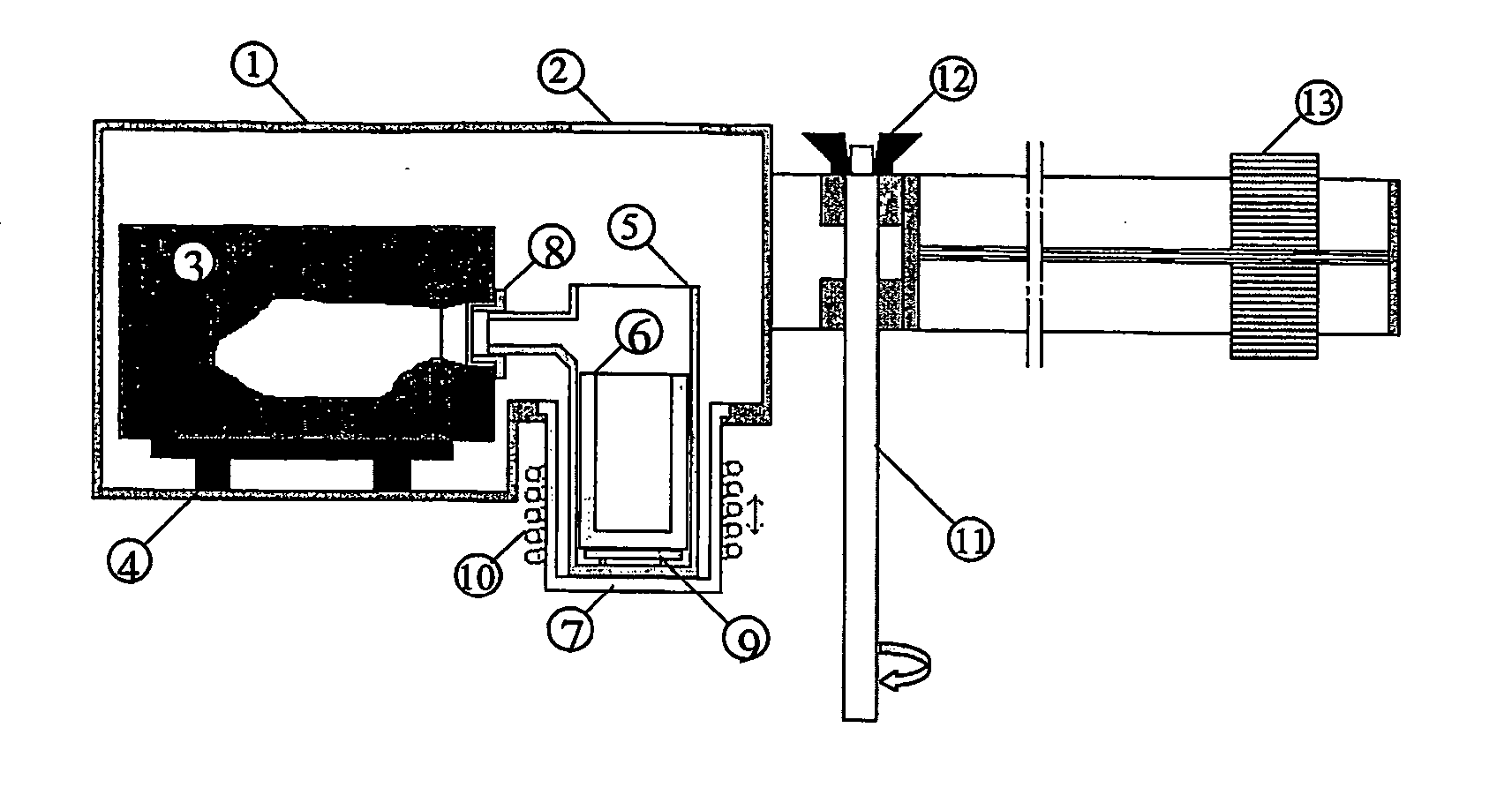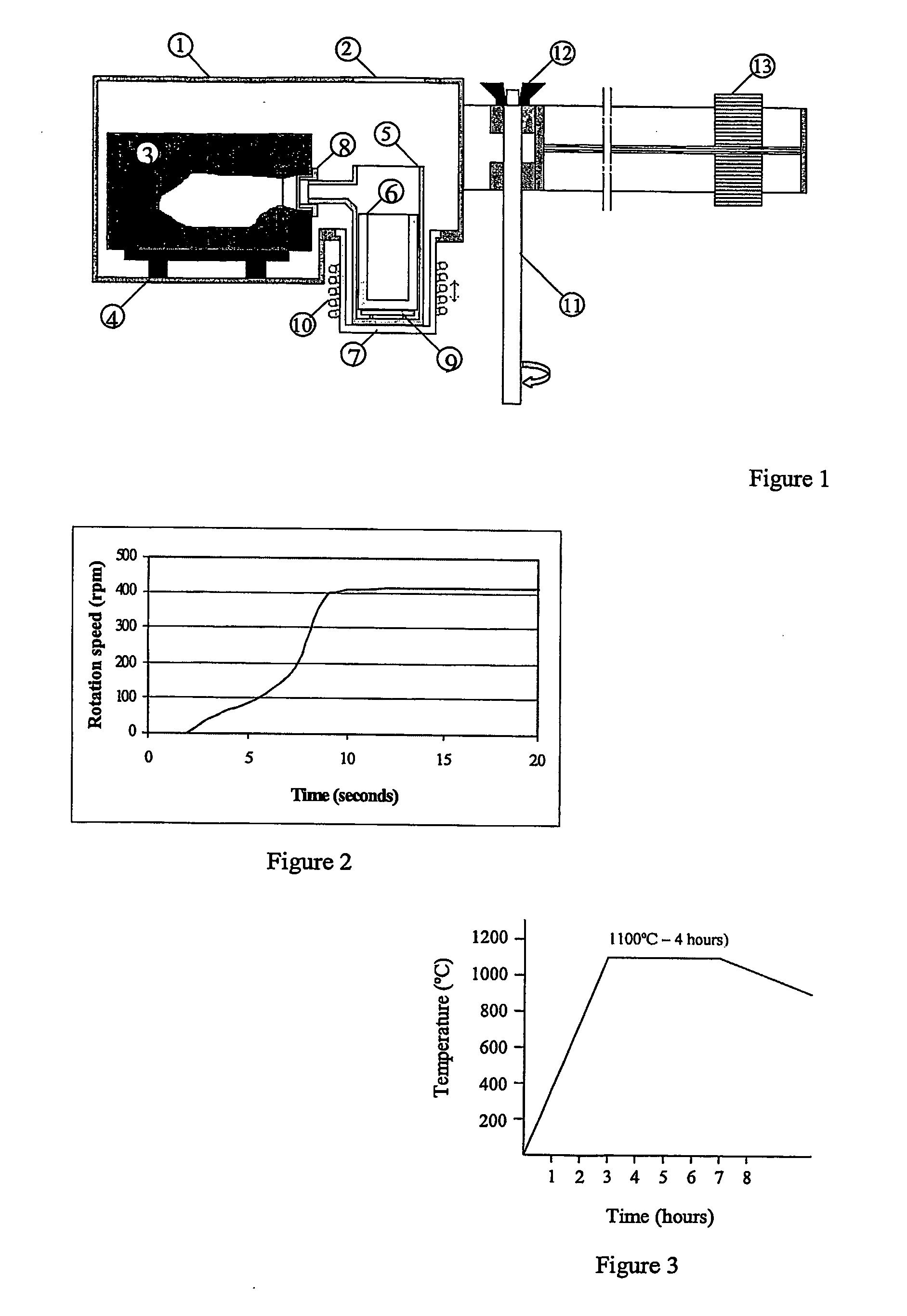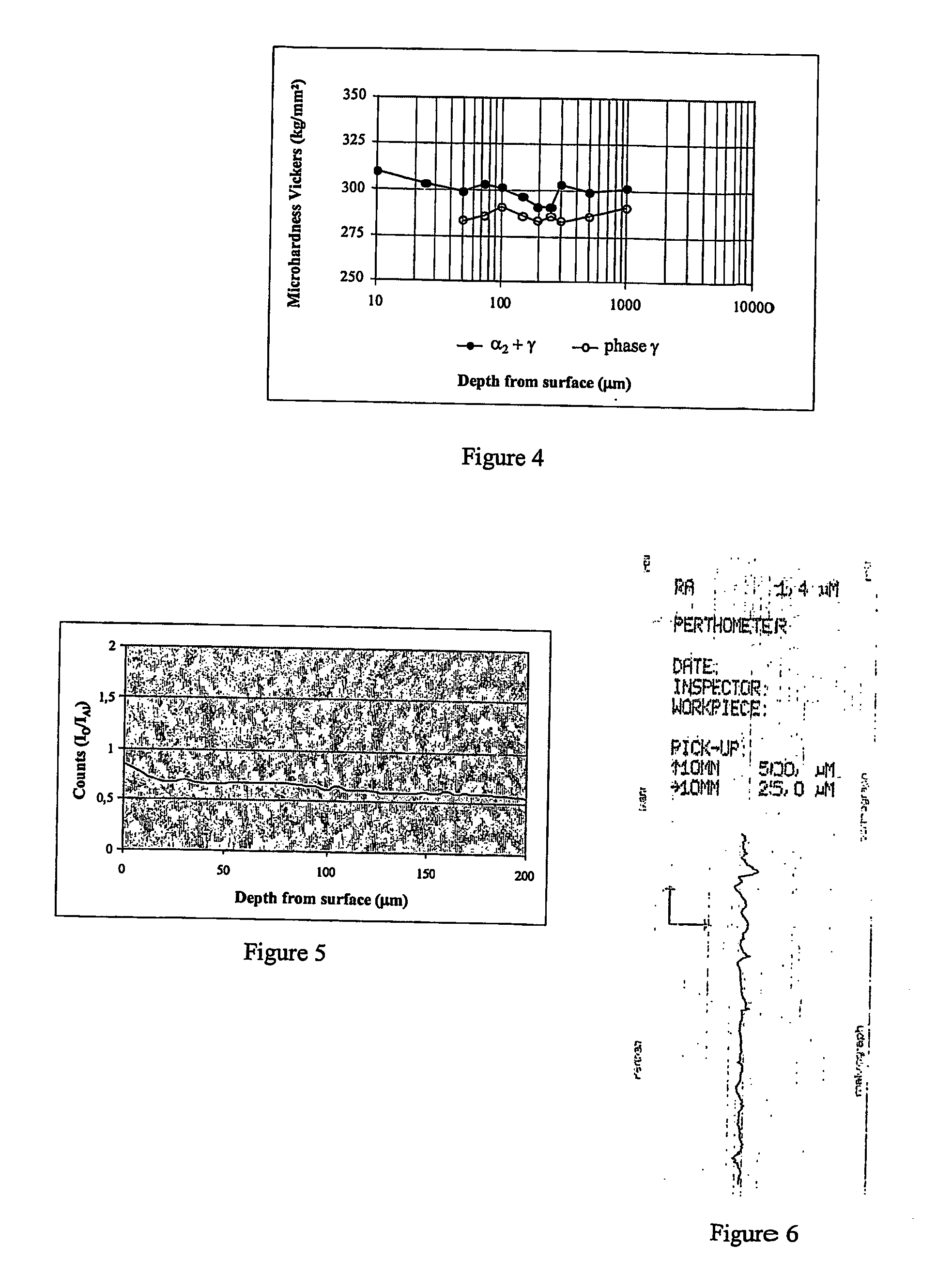Process for Obtaining Y-Tial Pieces by Casting
a reactive alloy and casting technology, applied in the field of reactive alloyfoundry process, can solve the problems of high cost of castings, difficulty in using traditional foundry techniques, low fluidity, etc., and achieve the effects of low cost, low contamination of base metals, and reduced global production costs
- Summary
- Abstract
- Description
- Claims
- Application Information
AI Technical Summary
Benefits of technology
Problems solved by technology
Method used
Image
Examples
example
[0070] Cylindrical samples with 20 mm diameter and 85 mm length were produced in γ-TiAl. Melting crucibles were multi-layered ZrO2+Y2O3 ones, prepared according to the methodology described, and with the dimensions: φext=54 mm, φint=40 mm, length=80 mm. Melting charges were made of commercially pure Ti and Al, with the composition indicated in table 9. 100 g charges were used, with 52% Ti and 48% Al.
TABLE 9Composition of the commercially pure titaniumand aluminium used in this example.Chemical composition (wt %)OHNCFeTiSiCuAlTi CP0.250.0120.030.080.2>99.5Al CP0.10.050.01>99.8
[0071] After pre-heated up to 300° C., the set crucibles-mould-melting charge was placed inside the melting furnace chamber, in the position schematically shown in FIG. 2. After closing, the chamber was evacuated up to the pressure of 5×10−6 bar, and after, a washing operation was done with high purity argon (N60 Argon-O222O−1 m3 / minute caudal under the pressure of 2.5 bar. This “washing” operation was perform...
PUM
| Property | Measurement | Unit |
|---|---|---|
| temperature | aaaaa | aaaaa |
| pressure | aaaaa | aaaaa |
| pressure | aaaaa | aaaaa |
Abstract
Description
Claims
Application Information
 Login to View More
Login to View More - R&D
- Intellectual Property
- Life Sciences
- Materials
- Tech Scout
- Unparalleled Data Quality
- Higher Quality Content
- 60% Fewer Hallucinations
Browse by: Latest US Patents, China's latest patents, Technical Efficacy Thesaurus, Application Domain, Technology Topic, Popular Technical Reports.
© 2025 PatSnap. All rights reserved.Legal|Privacy policy|Modern Slavery Act Transparency Statement|Sitemap|About US| Contact US: help@patsnap.com



